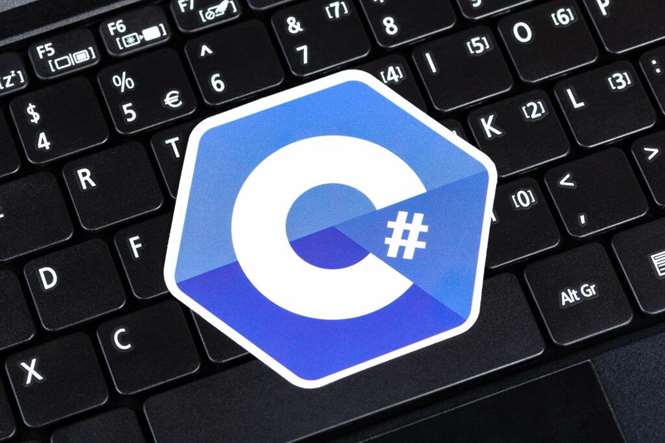-
کیان آباد ، خیابان 28 شرقی ، پلاک 12
-
info@themento.net

Content
Our agile product development solutions advance innovation and drive powerful business outcomes. This model may be applied alongside the broader CD Maturity Model, or independently, to evaluate and further develop an organization’s infrastructure practices. One of the challenges of an automated build and test environment is you want your build to be fast, so that you can get fast feedback, but comprehensive tests take a long time to run. A deployment pipeline is a way to deal with this by breaking up your build into stages. Each stage provides increasing confidence, usually at the cost of extra time. Early stages can find most problems yielding faster feedback, while later stages provide slower and more through probing.
This means that every commit made to the workspace is a release candidate for production. Each additional level requires more sophisticated control mechanisms including specialized execution environments . We have another pipeline, defined in deployment_pipeline.py, that extends the training pipeline and implements a continuous deployment workflow. It ingests and processes input data, trains a model and then deploys the prediction server that serves the model if it meets our evaluation criteria. The criterion that we have chosen is a configurable threshold on the mean squared error of the training. The existing tests were leveraged, we had already identified means to measure quality metrics.
Using the DevOps maturity model, you can identify your organization’s strengths and weaknesses and focus your training on key areas that need improvement, allowing you to more easily advance to the next level. We developed a strategy based around DevOps to create a leaner higher performing organisation and our journey is underway. Learn best practices from that, then go reach out to your full Java Stack team. And, start to begin to integrate them on that process, and deviate to make it fit, and continuous scale that across the organization, learning and adjusting incrementally, as you move along. So, what you see as an example is, if you’re in Team Agile, or you aspire to be in Team Agile, you could actually take care of some of the basic concepts, like assessment, coded pipelines, etc. Additionally, a check-tool was developed to generate a meaningful visualization of the assessment results and track the progress of improving maturity.
In addition, developer roles continue to shift ‘left’ towards traditional operations roles. Developers are increasingly taking up more roles in security-related tasks as more organizations integrate DevSecOps into their development process. In the software industry, release speed is crucial to success, and DevSecOps is the way to achieve it. He holds a Master’s degree in Computer science from Shenyang Jianzhu University in China. He has published 4 academic research papers and written several technical articles.
There are many ways to enter this new era and here we will describe a structured approach to attaining the best results. While agile methodologies often are described to best grow from inside the organization we have found that this approach also has limitations. Some parts of the organization are not mature enough to adapt and consequently inhibit development, creating organizational boundaries that can be very hard to break down.

Teams at the Intermediate level expand on these fast, build time tests. An intermediate team not only has the fast build time tests and manual testing, but they also have some additional automated functional tests. Many commercial tools strive are kitchen sink solutions targeting large scale enterprise development. Often times these solutions create complications and bottlenecks for small projects that do not need to collaborate with 5000 developers and multiple product lines, or multiple versions. On the other hand some companies need greater central control over the build and release process across their enterprise development groups.
That’s because many organizations make the mistake of approaching DevOps as if it’s a static goal or destination to be reached, rather than a constant journey of IT and development integration and optimization. DevOps isn’t a destination, it’s a journey towards a frequent and more reliable release pipeline, automation and stronger collaboration between development, IT and business teams. GitOps has emerged as a key technology in the cloud native computing space over the last few years. Research into delivery velocity has shown that speeding up software delivery is closely correlated with business success.
The model will indicate which practices are essential, which should be considered advanced or expert and what is required to move from one level to the next. The majority of respondents (more than 28%) conclude that everyone shares responsibility, however, almost 31% believe that they are fully responsible. Similar to last year, the response emphasizes the importance of clarity on this subject. Get full access to the world’s first cloud-based, open source friendly testing community.
Interesting metrics can e.g. be cycle-time, delivery time, number of releases, number of emergency fixes, number of incidents, number of features per release, bugs found during integration test etc. When moving to beginner level you will naturally start to investigate ways of gradually automating the existing manual integration testing for faster feedback and more comprehensive regression tests. For accurate testing the component should be deployed and tested in a production like environment with all necessary dependencies. End-to-end tests focus on the end customer experience and more sophisticated risk-based strategies. I recently wanted to find a model that explains all this in a more technical level. To help companies to identify where you are in the area of DevOps, test, code, culture, processes and so on.
The expert step is a great addition to #NoEstimate, Lean Startups with Hypothesis-Driven-development/Design and Pain-Driven-Development/design as the level 5 above. An extensive, high-quality suite of tests means that deployments happen very soon after code has been finished. Organizations at this level will often deploy code multiple times per day. That’s in contrast to teams at level 1, who deploy once or twice per quarter. Ideally, teams at this level start to involve compliance teams directly in the planning process.
A cluster is required with automatic machine selection and load balancing. At scale, traditional polling of source control systems looking for changes may place a performance strain on the ECD server as well as the source control system. In this case polling should be replaced by events from the SCM triggering builds in the ECD server, probably via webservice. The https://globalcloudteam.com/ lays out the five increasingly intense — and capable — levels of the process. At expert level some organizations choose to make a bigger effort and form complete cross functional teams that can be completely autonomous.
Most common ones are Jenkins from CloudBees, Travis CI, Go from ThoughtWorks, and Bamboo from Atlassian. How your organization can move to a higher level of GitOps and what it would look like when you get there. Nowadays a lot can be accomplished with less pain using technologies such as containers and serverless, but you still need to coordinate all cloud and related dependencies, such as container orchestrators. But perhaps you still not sure if you are lacking a certain tool in your toolbox if you are working currently with DevOps. Each of these Continuous Delivery maturity models mentioned define their own maturity levels. For example, Base, Beginner, Intermediate, Advanced, Expert are used by InfoQ.

Beginner level introduces frequent polling builds for faster feedback and build artifacts are archived for easier dependency management. Tagging and versioning of builds is structured but manual and the deployment process is gradually beginning to be more standardized with documentation, scripts and tools. A typical organization will have, at base level, started to prioritize work in backlogs, have some process defined which is rudimentarily documented and developers are practicing frequent commits into version control. There’s no doubt that DevOps teams are pushing advancements and ensuring better efficiency across the entire software development life cycle.
This should at least tell you if your application can be loaded by the hosting environment and can load the start page. If you have a good Continuous Integration process in place, you can start using the generated artefact to deploy that to an environment as the next state of enlightenment in your DevOps way of working. This requires the teams to abolish silos and work as cross-functional teams. Projects deploying features and fixes frequently, and where a modernized architecture simplifies the automations, are the more promising to transition to continuous deployment. Traditionally, QA focuses on testing the software before release into production to see if it’s ready for such release. But increasingly, modern QA organizations are also focusing attention onto the software running in production.
The model also defines five categories that represent the key aspects to consider when implementing Continuous Delivery. The result is the first pass at an evolving Infrastructure as Code Maturity Model. And, they needed to support mandatory gates, and application team defined gates, and be able to do all of this in a way that was consistent, reproducible, and traceable. And, their technology challenges were largely focused on, in a large, mature organization, there are inherent differences.
This level is where the hypothetical team that “does DevOps” by installing a Jenkins server lives. Continuous Integration integrates the new/changed code into the current system after each check-in without any manual steps. This can be realized by using a workflow orchestrator such as Jenkins or VSTS where you can configure a pipeline to do that for you. Best practices for Continuous Integration are having a build that can be used for all environments and using a microservice architecture. In the most ideal situation you want to automatically up- and down-scale the continuous integration services based on how much you are using them. This release however is still a manual process and require an explicit push of a button.
Our mission is to enable our clients to turn ideas into action faster. As the teams mature they will want their compiled, tested and verified artifacts to be archived and deployed to either a final QA server, and/or the production server for access by customers. continuous delivery maturity model To truly reach the CD zenith software engineers really have to turn all the IT “dials” to the max. For teams just embarking on the CD journey, it can be a daunting task to try and make sense of all the frameworks, practices, tools, buzzwords and hype out there.
Where we visualize and understand the path from idea to where it is released and brings business value. Moving to beginner level, teams stabilize over projects and the organization has typically begun to remove boundaries by including test with development. Multiple backlogs are naturally consolidated into one per team and basic agile methods are adopted which gives stronger teams that share the pain when bad things happen. Ways you can improve your organization’s performance against DORA metrics to achieve faster and more agile deployments.
The journey that started with the Agile movement a decade ago is finally getting a strong foothold in the industry. Business leaders now have begun to embrace the fact that there is a new way of thinking about software development. IT can once again start pushing innovation instead of restraining it by expensive, slow, unpredictable and outdated processes.
As a result of this you can also start cross referencing and correlating reports and metrics across different organizational boundaries,. This information lets you broaden the perspective for continuous improvement and more easy verify expected business results from changes. Moving to intermediate the level of automation requires you to establish a common information model that standardizes the meaning of concepts and how they are connected.
Those selected practices have been distributed across the model’s five levels of maturity. At certain times, you may even push the software to production-like environment to obtain feedback. This allows to get a fast and automated feedback on production-readiness of your software with each commit.